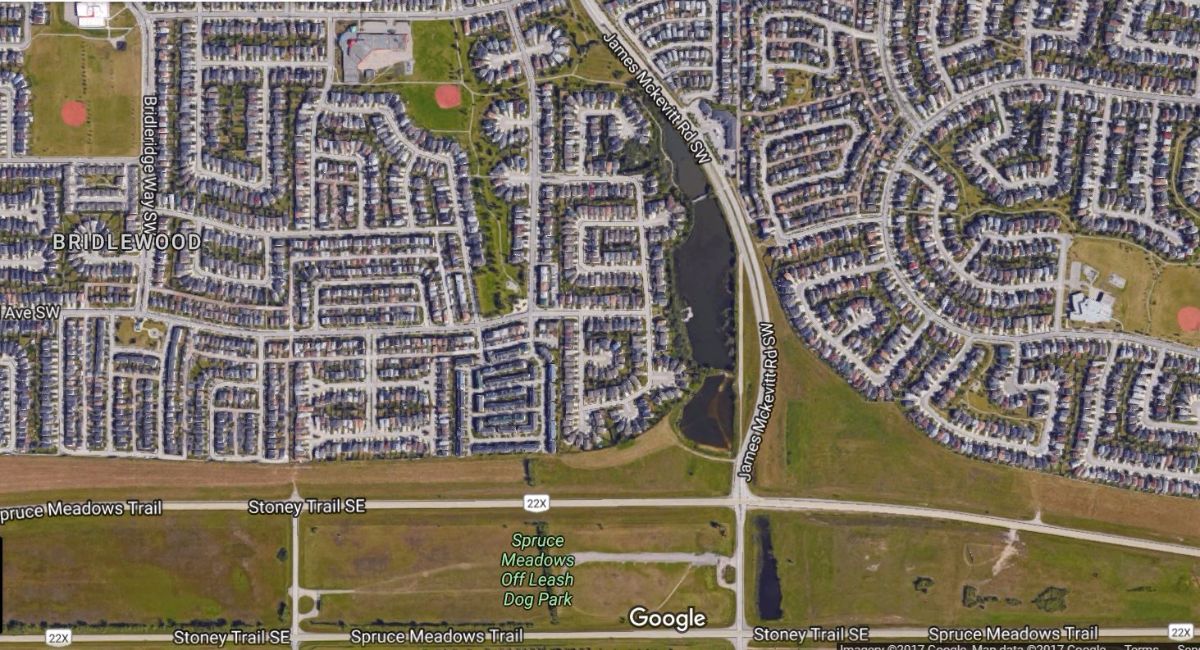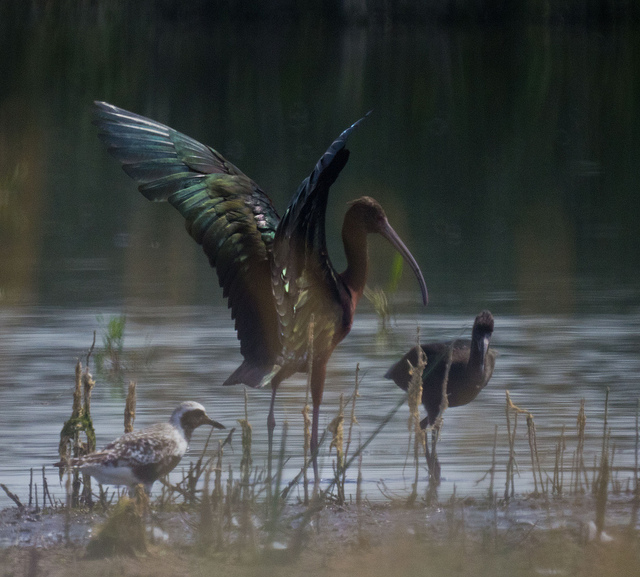Posted by Bob Lefebvre
Photographs of spring birds, by Tony LePrieur.

Yellow-rumped Warbler (Audubon’s), Bridlewood Wetland, April 30, 2017. Photo by Tony LePrieur.
Yellow-rumped Warblers are usually among the first warblers to pass through Calgary on Spring migration, along with Orange-crowned Warblers. Most of the ones we get here are the Myrtle subspecies, the eastern and northern form, which have a white throat and a more prominent black mask. They breed in the boreal forest. The Audubon subspecies, shown here, breeds in the western mountains. This year, quite a few Audubons were reported here. There is talk that the two subspecies will be split again into two separate species, so it is important to note which one you see, especially if you are recording your sightings on eBird.

Common Grackle, Bridlewood Wetland, April 30, 2017. Photo by Tony LePrieur.
The Bridlewood Wetland is located just north of Spruce Meadows, on James McKevitt Road in SW Calgary. It is a small wetland but has a trail around it and a bridge from which to view the birds.

The Bridlewood Wetland in SW Calgary.
The rest of the photos were taken in Carburn Park on the Bow River in SE Calgary.

Common Goldeneye (female), Carburn Park, April 30, 2017. Photo by Tony LePrieur.

Common Merganser (female), Carburn Park, April 30, 2017. Photo by Tony LePrieur.

Lesser Yellowlegs, Carburn Park, April 30, 2017. Photo by Tony LePrieur.
On spring migration, we get more Lesser Yellowlegs than Greater Yellowlegs in the city. But we do get both species. The Lesser is slighter, with a smaller head, and the bill is about the length of the head from front to back, as with this bird. The Greater Yellowleg’s bill is about one and a half times the head length, and often slightly curved upwards.

Song Sparrow, Carburn Park, April 30, 2017. Photo by Tony LePrieur.
This Song Sparrow is missing its tail. Birds don’t molt their tail feathers all at once, so a missing tail probably indicates that the bird narrowly survived an attack by a predator.

Beaver, Carburn Park, April 30, 2017. Photo by Tony LePrieur.
See more of Tony’s photos on his Flickr page.






















